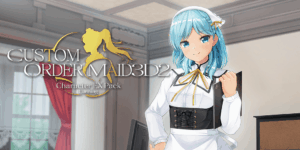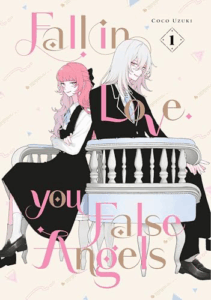Manga is Not “Backward”, and the Format is Not a Reason to Restrict Access to a Book – Manga Librarian

After seeing a selection from a Brevard County School Board meeting in which the manga Sasaki and Miyano was removed from schools in that district, it seems imperative that I provide some assistance to understanding the format in which manga is presented. Because while I am entirely aware that the real reason this wholesome BL series about two boys growing closer over appreciation of a fandom is not because of the format, the use of the format as justification is a dangerous slippery slope which has the potential to hurt readers. While I would like to delve into an effusive defense of Sasaki and Miyano (which the other board member even admits does not demonstrate any of the characteristics which would put it in violation of Florida law), let’s tackle the reasoning the chair utilized for discrediting the format for now. I feel she is most unfortunately misinformed, and I worry that many people are.
Manga is mostly printed from right to left. This is an industry standard, started by Tokyopop in favor of authenticity, but also as a cost-saving measure. The process of flipping manga, and in fact Western comics for distribution in other regions where the language is read right to left, is actually a very intensive process. It’s not as easy as just hitting a flip button in editing software. Artists orient images in particular ways for reasons, and changing orientation can actually completely disrupt the flow of a work, especially when taking into account multi-page spreads. Keeping the original orientation is an industry standard worldwide, and flipping is usually only done nowadays at the artist’s request.
The reality is that English is read from left to right, but English is not the only language on this planet. Many languages are written from right to left. Japanese is one of those languages, and I think reading manga is an excellent way to demonstrate linguistic differences as well as visual literacy.
Manga publishers always provide a handy guide for how to read manga, and also explain the reasoning at the back of the book– that is, the leftmost page.

There is even reason to believe that reading in a different orientation to one’s primary language has benefits. I know that there were definitely many for me when I began reading manga in my adolescence.
Of course, this is anecdotal, but I can tell my “manga reading story” for context. I was an early reader. As an autistic person, I do have a few “savant” characteristics, and my early reading acquisition was one of them. I learned to read simply from my mother reading aloud to me, and I was a fluent reader by the age of two. In some ways, this made me very lucky, but it also instilled in me a few habits that I may not have developed if I had been a traditional learner. I read very fast, and was a consummate skimmer. I wasn’t great at stopping and reading for detail. I gobbled words and information. When I began to read comics, I slowed a bit, but manga made me have to reassess my whole reading style. I couldn’t skim as I learned the format layout. My hunger for the art and stories built resilience in me as reading was, briefly, more challenging than it had been before. I learned to pay attention to details, both in the words and pictures. The tiny asides, sound effects, and author notes actually made me a more intentional reader. I don’t think I would have been as successful in both of my graduate degrees, particularly my English Literature MA, if I hadn’t had my “manga training”.
Having worked with many young people in all grades from 3K-12, I can affirm that manga as a format is an excellent way to engage readers of varying abilities, neurotypes, and reading levels. It is a multimodal format, and the difference in printing style has benefits to our readers. I do believe in adhering to collection development policies and buying what is age-relevant to readers, but manga is a massive book industry and reading it in its intended format is not wrong. While it may not be for every reader, just as audiobooks, comics, or other alternative formats may not work for everyone, it should still be available.
I’ve done a lot of thinking and writing about this topic in the book, if this is of interest to you, and my co-authors have also written further affirmations of the academic benefits of manga in schools.
If this is your first time reading anything from me, I am a school librarian with an expertise in manga collection development and student centered librarianship. I have traveled to Japan multiple times, and I have been reading manga for over two decades. One of my major goals is to dispel misunderstandings about manga such as this, so that readers may have access to incredible works in libraries.








